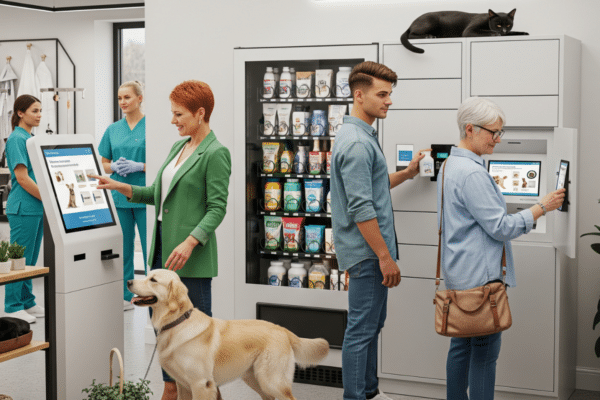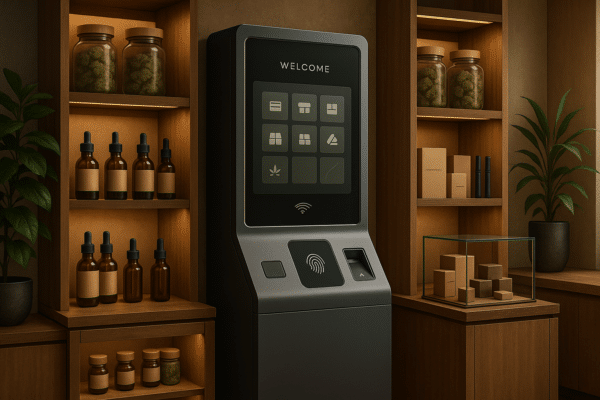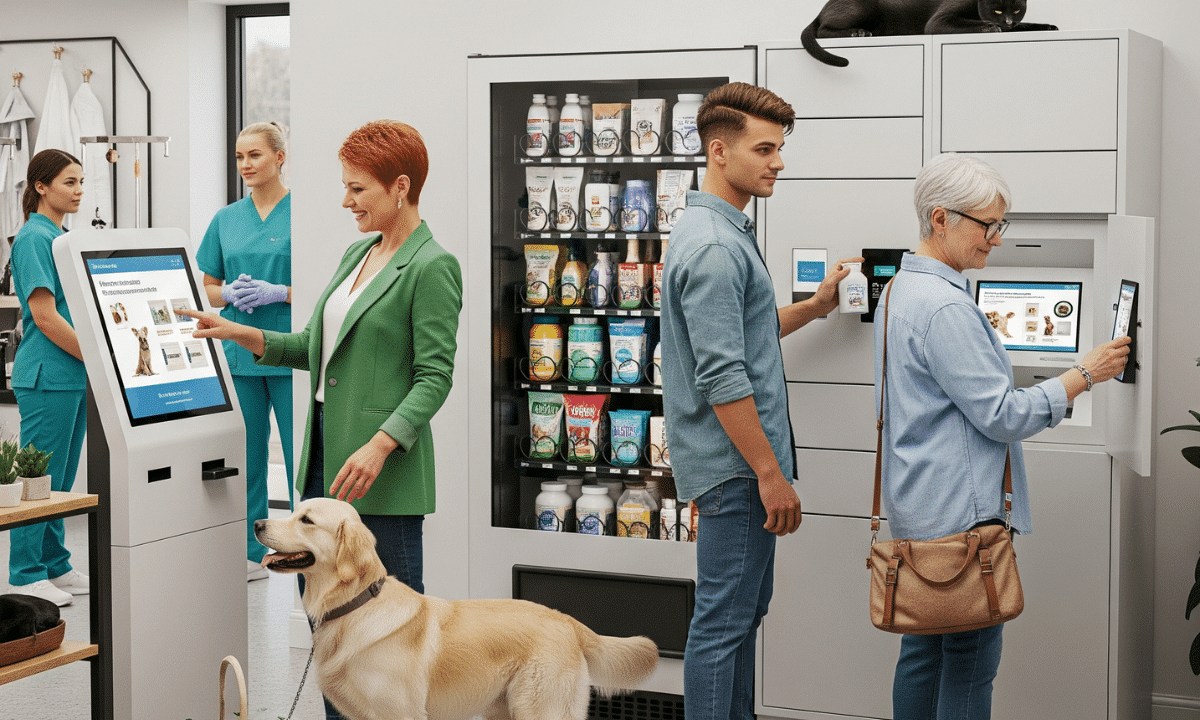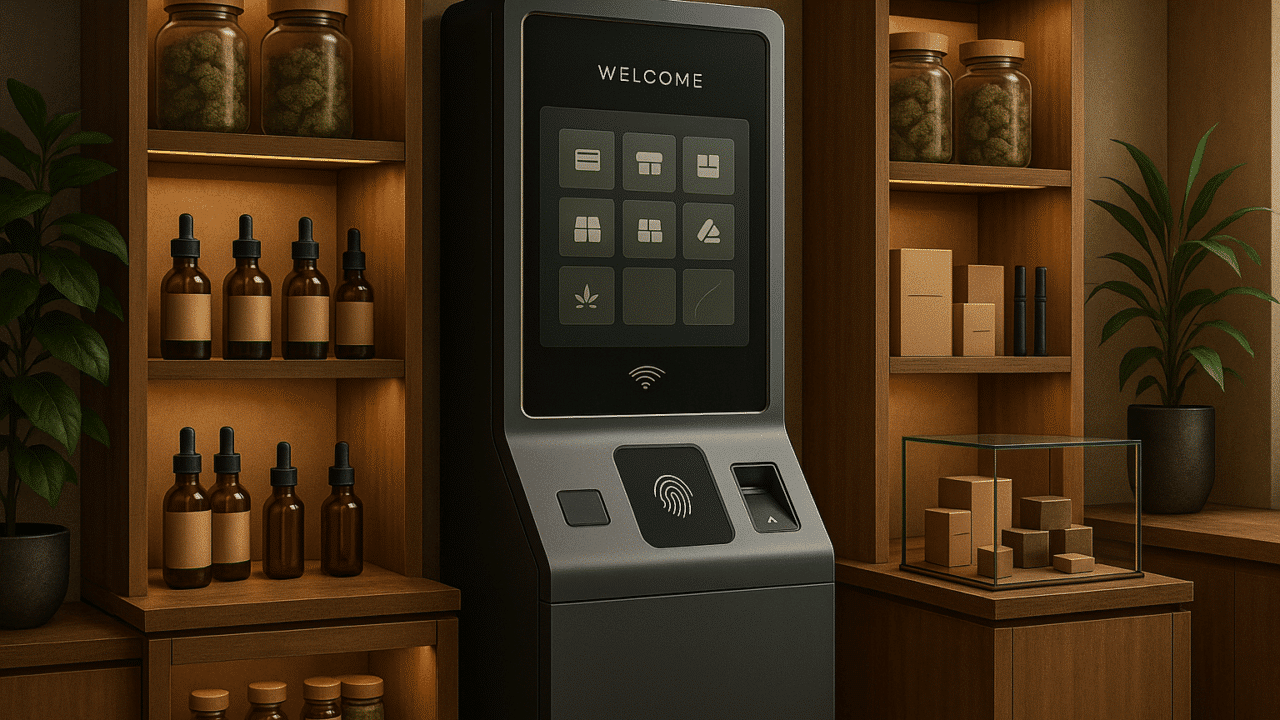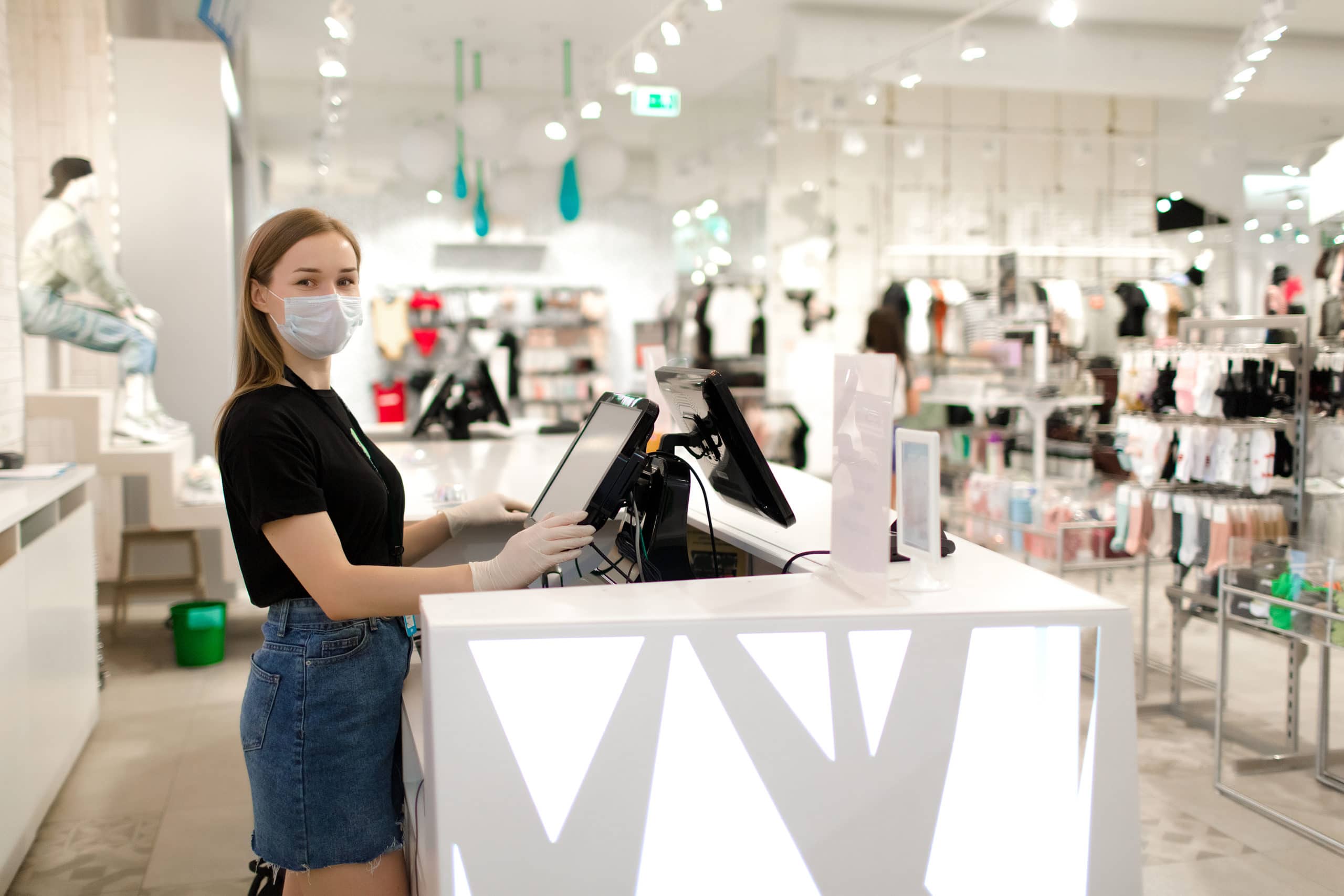
Store Operations Retail – Optimizing Retail Performance
Retail Store Operations: 7 Ways To Get The Most Out Of Your Stores And Sales Channels.
The definition of retail store operations has expanded dramatically over the past few decades. What was once a brick-and-mortar dominated landscape has fast become one that has grown to meet a new generation of customer – one who is far more selective, far less patient, and places far greater emphasis on the shopping experience itself.
Add an omnichannel sales environment where brands and products are being sold on store shelves, online, over smartphones and mobile devices, across social media platforms, and even using insanely advanced virtual reality technology, and you now have a whole new list of retail operations challenges brands and retailers must be ready to tackle. Not to mention, a long list of new opportunities they’ll need to capitalize on in order to stay relevant to consumers.
Poor store operations is this kiss of death in today’s retail environment. The question is how do brands and retailers optimize their store operations without overextending their budgets?
What are retail store operations?
Retail store operations is the term used to describe the complete portfolio of operational considerations and responsibilities brands and retailers must address in order to operate their storefronts, ecommerce sites and any other sales channels efficiently and effectively. Yes, that’s certainly a long-winded and open-ended definition. Perhaps, the best way to look at retail store operations is to think of all the things it takes to run a successful retail business – the right people, the right locations, the right products, effective inventory management, distribution partners, intelligent pricing, merchandising and marketing, sales and revenue tracking, new mobile technologies – the list is considerable, which is why retail store operations can be hard for brands and retailers to both define and effectively manage.
Efficiency – the ultimate retail operations objective
Retail operations encompasses a lot of different business areas and core competencies. But every aspect of retail operations works towards the same ultimate goal – efficiency in performance.
The goal is to deliver the highest possible output – whether it’s customer service standards, cost efficiencies or bottom-line sales numbers – while making the most effective use of resources. In other words, you (and by association your customers) hope to get a lot more out of your retail operations programs than you put into them in terms of time, energy and capital.
What are the benefits of efficient retail store operations?
Let’s look at this from two different perspectives – the brand or retailer and the customer or end user.
Brand/retailer advantages
- Cost control – if you’re operating with maximum efficiency, it’s far easier to track and control expenses.
- Profitability – streamlining operations means fewer wasted dollars cutting into your margins.
- Attentive customer service – efficiency frees up your sales staff from added and time-consuming tasks and allows them to focus on what matters most – your customers.
- Accountability – efficient operations are transparent operations, which means brands and retailers will see what’s working and what’s not.
- Better decision-making – the more efficiently you manage store operations, the more effectively you can change, adapt and address performance issues and market changes.
Customer/end user advantages
- Improved shopping experience – customers appreciate great service and honest answers to their questions. Stores that operate efficiently deliver better customer engagement.
- Speed and convenience – an efficiently operated store is an efficiently designed store and that makes finding what you came for a lot easier.
- Personal shopping preferences – efficient operations integrate in-store and online sales channels so customers are free to shop in whatever way suits them on any given day.
7 Ways To Improve Retail Store Operations
So exactly how do you achieve operational excellence in retail? The honest answer is there is no set of hard-and-fast rules designed to maximize retail operations performance. This being said, there are some critical operational areas that are low-hanging fruit when it comes to improving store and overall retail operations. We’ve put together a list of seven considerations and if you address them effectively, it’ll go a long way to improving your retail operations.
1. Real-time, data-driven insights
It’s a lot easier to improve operations when you have real-time data driving your management and performance decisions. Today’s intelligent data solutions are able to provide brands and retailers with a level of visibility into their operations that was never before possible. From merchandising to inventory to pricing compliance to competitive intelligence to sales broken down by product, location, region and any other KPI you can imagine, new digital data capture and retail management solutions are changing the game in retail store operations and omnichannel sales performance by keeping management perpetually aware of exactly what’s going on in their stores and across their sales channels.
2. Customer engagement
One of today’s greatest operational challenges is connecting with a busier, less patient customer who wants answers and expert service on the spot. Once again, advanced digital solutions are breaking new ground for brands and retailers in this area. For instance, new engagement solutions run on standard mobile devices to provide in-store salespeople with instant intelligence at the point of sale regarding product specifications, warranty information, service plans, features and benefits, pricing and any other important detail a customer might want to know.
Even more advanced engagement solutions are being introduced, such as VIBA, the Virtual Interactive Brand Ambassador, launched by The Revenue Optimization Companies (T-ROC). VIBA incorporates virtual reality, augmented reality, live video chats, live broadcasts, product demos, videos and more into a single solution that can be activated using online weblinks, standard QR codes, or in-store totems.
“VIBA takes the customer experience places it’s never been before,” says Mary Jo Liesch, Director of Business Development at T-ROC. “Our clients are able to provide 24/7/365 service to their customers, thanks to features like Valerie, our Virtual Ambassador, who never needs rest or days off. Plus, the real power of VIBA is that the platform performs in stores, online, and over just about any mobile device. There really are no limits to where, when and how you can reach out to customers with VIBA and that’s proving to be a big advantage and generating some tremendous ROI for T-ROC clients,” adds Liesch.
3. Consumer Insights
Retail store operations are about increasing efficiency and driving more conversions. You can’t do either one without deeply understanding your customers, their preferences, and how they feel about your stores and products. Consumer insights gained through methods like mystery shopping, customer surveys and competitive intelligence can help you spot flaws in your store operations, sales approach, customer service strategies, and more.
4. Merchandising
Nothing crushes retail store operations quicker than poorly optimized merchandising. Your shelves, product displays, in-store demos, signage and marketing materials are all integral parts of creating the seamless shopping experience customers desire. Additionally, inventory and distribution are intimately tied to merchandising. If store shelves are empty because there’s a glitch in your inventory processes or distribution channels, you’re losing sales and that’s the direct opposite of what efficient retail store operations are all about.
A solid merchandising program will actually drive improved operations. The customer enjoys a rewarding shopping journey because shelves are stocked, stores look great, and the entire process feels welcoming and easy. Brands and retailers win more sales thanks to optimized stores, plus, they have a far easier time tracking performance because merchandising and inventory are in order. Once again, technology steps up to the plate. New advancements in retail field management are making it easier for brands and retailers to ensure merchandising compliance with solutions that deliver real-time reporting supported by instant photo capture.
5. Omnichannel sales and touch points
Retail store operations is no longer solely about the retail store. It’s about optimizing performance across every sales channel: physical stores, ecommerce, social media, events, demos, guerilla marketing programs, you name it.
Solutions like VIBA, mentioned earlier, are helping to make omnichannel touch points more integrated and, therefore, effective. It’s also critical to manage inventory and fulfillment across all channels. For example, retail trends like BOPIS (Buy Online and Pick Up In-Store), home delivery, and curbside delivery, all require added focus on inventory and fulfillment. It’s crucial that cross-channel operations work in unison, which has become a major challenge and top priority for today’s retail operations managers.
6. On-hand inventory
Inventory is always a challenge. However, one of the biggest sore spots for a lot of brick-and-mortar stores is managing on-hand inventory. This might come as a shock, but for the average store, on-hand inventory accuracy hovers somewhere around 50%! That’s absurd. How are you supposed to effectively manage retail operations if your on-hand count is that unreliable. Fortunately, the latest RFID solutions are now being implemented by specialized teams that can bring on-hand inventory accuracy to near 100%. Better yet, rather than the painfully long and arduous inventory processes that have failed for years, accurate RFID counts can be done in a matter of seconds with one scan of a wand. To learn more about RFID programs, talk to the experts.
7. Sales Staff Performance
Despite the rise in online shopping and sales, most transactions still happen in stores. In fact, more and more people are coming back to the comfort zone that only face-to-face service can provide. The caveat in terms of retail store operations is this – in today’s multichannel retail world filled with people seeking instant-gratification, salespeople must be at the top of their games. If they’re not, they will lose more customers than they convert. Recruiting, training and onboarding exceptional retail sales professionals is more important today than it has ever been. The right people make all the difference – for your customers and for effective retail store operations.
BONUS #8 – Find the right partner and measure that ROI
Here’s a bonus retail store operations tip. If you’re like most brands and retailers, you’re probably already stretched pretty thin operationally. Taking on more challenges might not be in your company’s best interest. Instead, consider partnering with a third-party retail operations management company.
The right partner will help you plan and implement solutions across your store and retail operations to optimize both performance and cost efficiency. These companies live and breathe retail operations and will do much of the heavy lifting for you. Better yet, a reputable retail management company will provide you with clear and concise reporting that shows you exactly what you’re getting for your investment. You’ll be able to hold them accountable for their promises because, ultimately, ROI is how these companies are measured.
For more information about retail store operations and retail management services, contact the experts at The Revenue Optimization Companies (T-ROC), a leading provider of retail operations solutions to Fortune 100 brands and retailers.
If you found this post interesting and insightful, we invite you to explore additional posts about the retail industry and the new technologies driving it forward at https://trocglobal.com/company/#blog.
TROC is the leading provider of premier staffing outsource, software, managed technology services, and consumer insights for the top global brands, retailers, manufacturers, service providers, and distributors. The company’s distinctive solutions address the entire lifecycle of brick and mortar brand and retail operations by combining retail expertise, best practices, and technology to help its customers achieve sales and operational excellence as well as a sustainable competitive advantage. As a Retail 4.0 thought leader, T-ROC enables companies with high-value products in the physical world to thrive through the digitalization of the physical shopping experience. To learn more about T-ROC, visit www.trocglobal.com.

